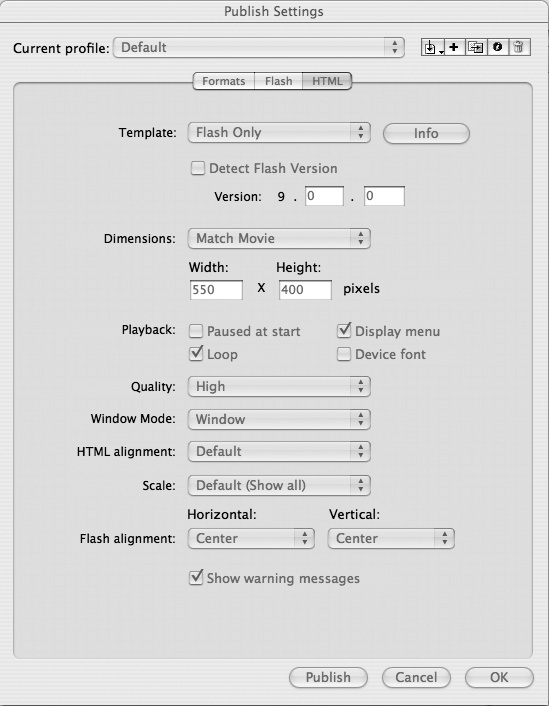Chapter 20. Publishing and Exporting
You're done designing, developing, and debugging. Your animation is ready for its audience. You've decided whether you want them to view it on a web page, a CD, or on their computers. The next step is to publish the animation, which means packaging it in a form your audience can play. Less often, you may export the animation, so you (or someone else) can further edit and develop it using another graphics or animation program (like Adobe Illustrator or Adobe Fireworks). In this chapter, you'll learn how to do both.
Using Flash's publishing settings (Figure 20-1), you'll see how to tell Flash to publish your animation as part of a web page, and as a standalone projector. You'll also see how to export the artwork in your animation as editable image files. But before you publish or export, you need to learn how to optimize your animation (reduce your animation's file size) so that it runs as quickly and efficiently as possible—a real concern if you're planning to publish your animation on the Web (see the box on The Importance of Being Optimized).

Figure 20-1. Flash lets you choose how to deliver your compiled animation. The options shown here produces a plain .swf that plays in most browsers. You can also publish it as a standalone projector file (a self-contained executable file you double-click to run, with no need for a web browser or a separate ...
Get Flash CS5: The Missing Manual now with the O’Reilly learning platform.
O’Reilly members experience books, live events, courses curated by job role, and more from O’Reilly and nearly 200 top publishers.

